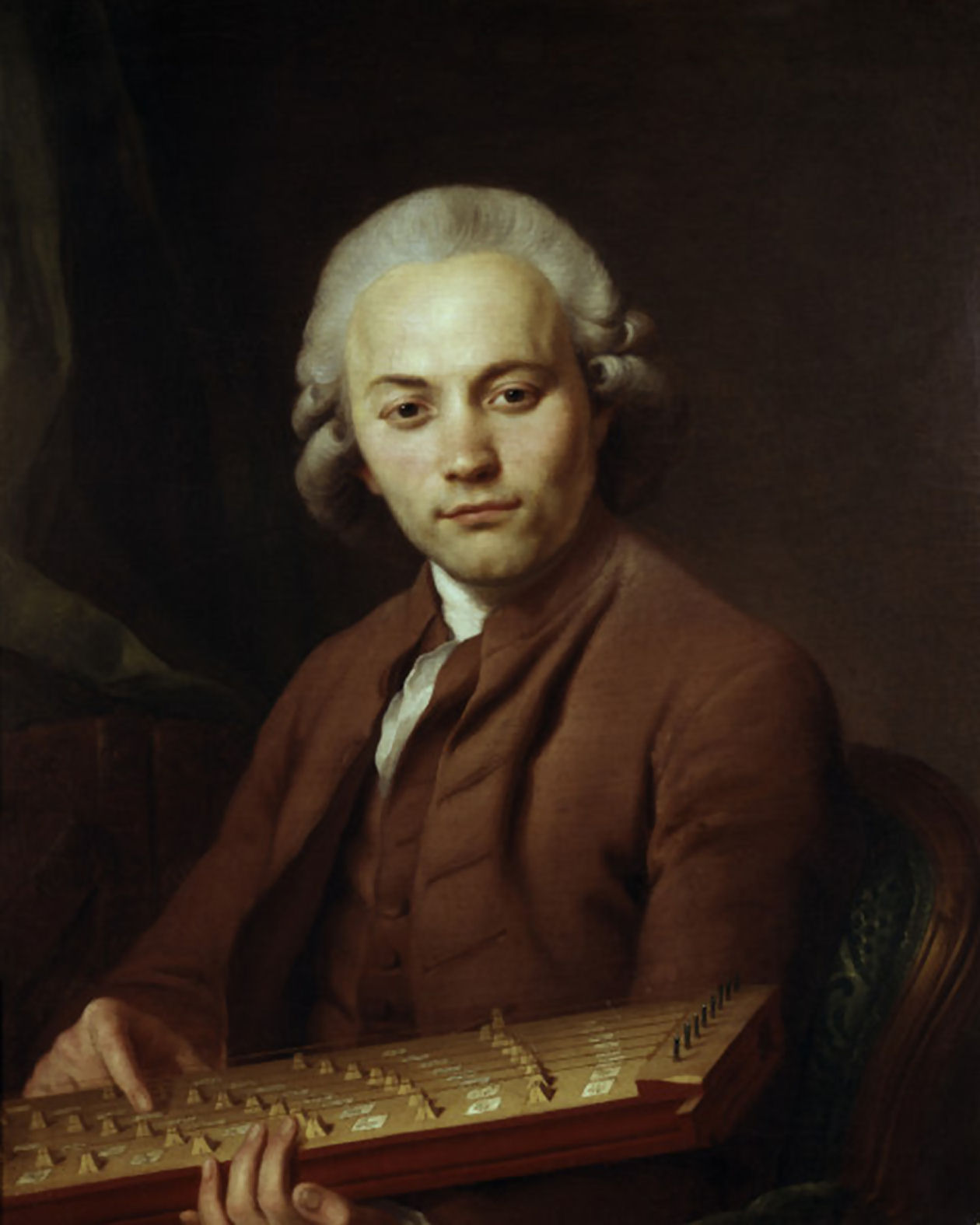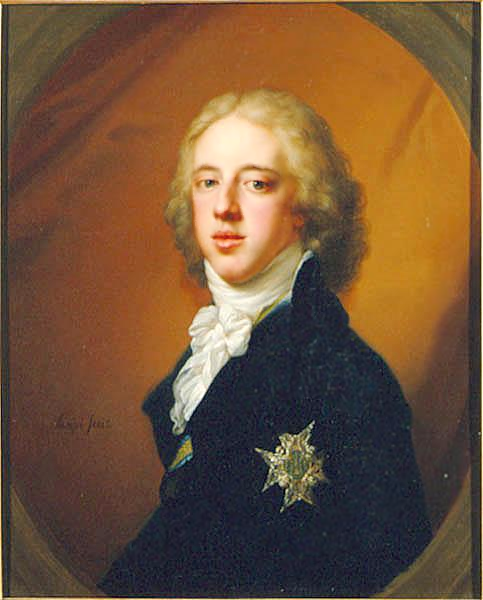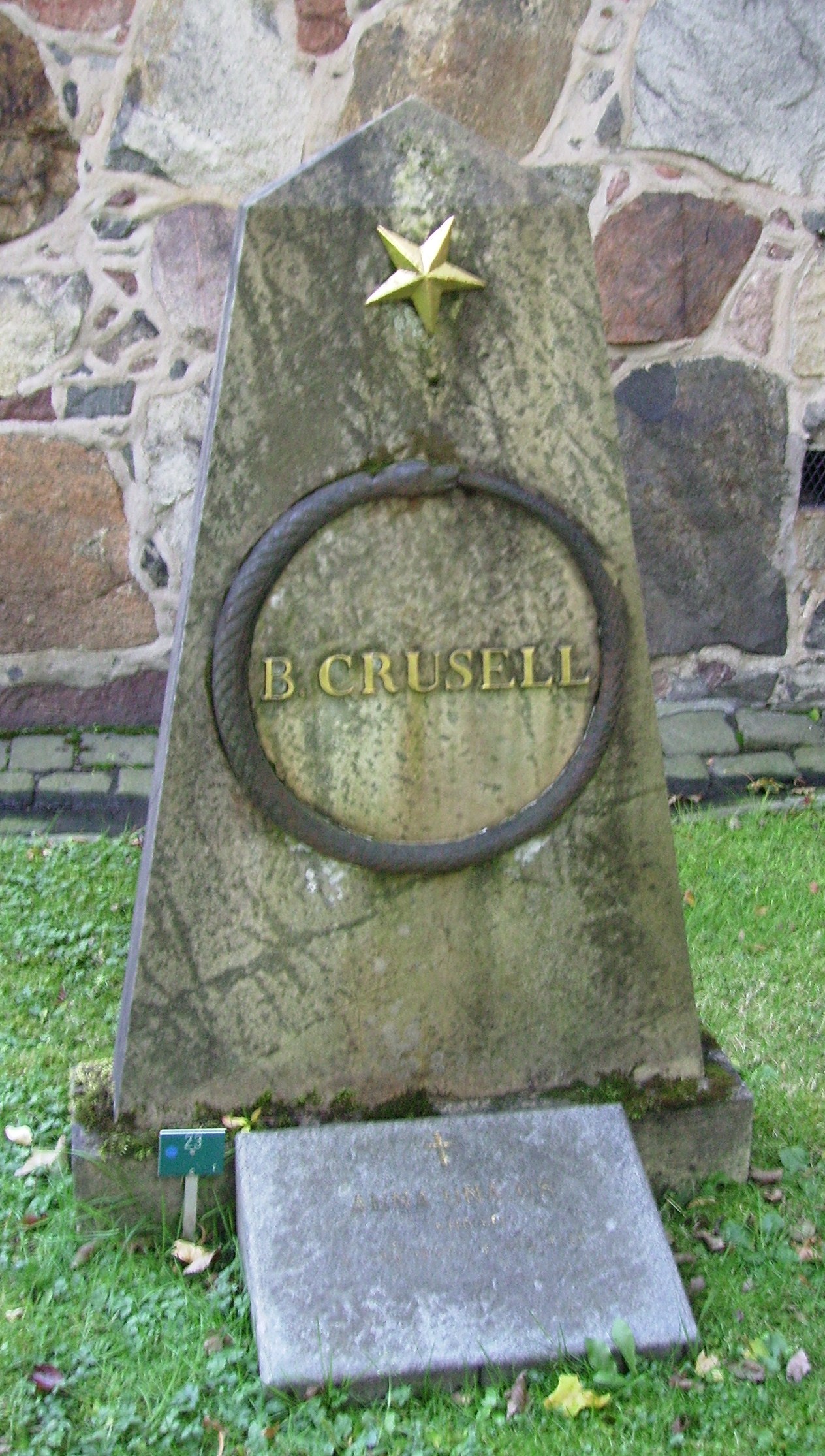1. Overview
Bernhard Henrik Crusell (Bernhard Henrik CrusellSwedish, October 15, 1775 - July 28, 1838) was a prominent Swedish-Finnish clarinetist, composer, and translator. He is widely regarded as the most significant and internationally recognized Finnish-born classical composer, often considered the outstanding Finnish composer before Jean Sibelius. Crusell's career spanned both virtuoso performance and prolific composition, leaving a lasting impact on the clarinet repertoire and the musical landscape of his time. His contributions extended beyond music, encompassing significant work as a translator of operas and a recipient of prestigious awards for his service to state and society.
2. Early life and training
Crusell's early life was marked by humble beginnings and a burgeoning passion for music that defied his family's circumstances, laying the foundation for his distinguished career.
2.1. Birth and childhood
Bernhard Henrik Crusell was born in Uusikaupunki, Finland (then known as Nystad, part of the Swedish Empire), into a poor family of bookbinders. His grandfather, Bernhard Kruselius, had learned the trade in Turku and Stockholm before settling in Pori, where he had nine children, including Crusell's father, Jakob, who also became a bookbinder. In 1765, after completing his apprenticeship, Jakob moved to Uusikaupunki and married Helena Ylander, who passed away about a year later. In 1769, he remarried Margaretha Messman, with whom he had four children; however, Bernhard was the only one to survive into adulthood.
Crusell later recounted an early childhood memory that underscored his innate musical inclination, stating that in his hometown, only a shop assistant played the flute for amusement. He recalled sitting in the street at four years old, captivated by the sweet melodies. Despite his parents' scolding and even a beating for his disobedience, he consistently returned to listen, leading them to eventually leave him to his 'craze,' confident he would return once the flute went silent.
2.2. Education and early activities
When Crusell was eight, his family relocated to Perttula, a rural village in Nurmijärvi, approximately 23 mile north of Helsinki. His profound interest in music persisted, leading him to learn to play a friend's clarinet entirely by ear. Soon after, he began receiving formal training from a member of the Nyland (Uusimaa) regimental band.
In 1788, at the age of thirteen, a family friend, recognizing Crusell's exceptional natural talent, introduced him to Major O. Wallenstjerna at Sveaborg (ViaporiFinnish), a Swedish fortress constructed on six islands off the coast of Helsinki. The educated officers stationed at Sveaborg significantly influenced the cultural and political life of the city. Impressed by Crusell's playing, Major Wallenstjerna recruited him as a volunteer member of the Sveaborg military band and provided him with lodging alongside his own family. During his time at Sveaborg, Crusell received a comprehensive education, excelling particularly in music and languages.

2.3. Move to Sweden and activities
In 1791, when Major Wallenstjerna was transferred to Stockholm, Crusell accompanied him. Despite spending the majority of his remaining life in Sweden, Crusell consistently identified himself as a Finn. In a letter to the poet Johan Ludvig Runeberg in his later years, he referred to himself as a "finsk landsman" (a fellow Finn). He meticulously maintained his travel diaries in Swedish, reflecting his enduring connection to his Finnish heritage.
3. Musical career
Crusell's musical career was distinguished by his dual roles as a celebrated clarinet virtuoso and a significant composer, contributing extensively to the classical repertoire, particularly for his primary instrument.
3.1. Clarinetist
In Stockholm, Crusell continued his musical studies and quickly established himself as a prominent clarinet soloist. In 1792, at the age of sixteen, he was appointed director of the regimental band. The following year, in 1793, he became the principal clarinetist with the Hovkapellet (Royal Court Orchestra), an ensemble directed by his composition teacher, the German composer Abbé Vogler.

In 1798, Crusell received financial support that allowed him to reside in Berlin for several months, where he studied with the renowned German clarinetist Franz Tausch. Tausch was influential in founding the German school of clarinet playing, which emphasized beauty of tone over mere technique. Crusell's progress was rapid, and he performed in concerts in Berlin and Hamburg before returning to Sweden. A review of his Hamburg concert in the Allgemeine musikalische Zeitung was notably positive, praising his performances.
Crusell spent the remainder of his life in Sweden, returning to Finland only once. Following a trip to Saint Petersburg, he performed in Helsinki on July 7, 1801, with pianist Fredrik Lithander, and in Turku on July 30, at a concert organized by the orchestra of the Turku Society of Music. At that time, Turku was the center of musical activity in Finland, with the Turku Society of Music (Turun Soitannollinen Seura), founded in 1790, playing a crucial role in promoting music and establishing its own orchestra.
In Stockholm, Crusell cultivated a friendship with the French ambassador to Sweden, a connection that facilitated his trip to Paris in 1803. In Paris, he performed and furthered his clarinet studies with Jean-Xavier Lefèvre at the newly established Conservatoire de Paris. On June 2, encouraged by Lefèvre, Crusell acquired a new mouthpiece crafted by Michel Amlingue, and on September 14, he purchased a six-key C clarinet made by Jean Jacques Baumann. Around 1800, Crusell transitioned from playing with the reed turned upwards to the modern practice of turning it downwards, a position more conducive to cantabile playing. While the exact timing of this change is not definitively known, it is suggested that he might have initially favored the reed-above position due to dental irregularities.

The Théâtre-Italien de Paris offered Crusell a position as first clarinetist. However, Gustav IV Adolf of Sweden, keen to retain Crusell within the royal orchestra, denied his petition for an extended leave. As an incentive, the king appointed Crusell as chief conductor of the bodyguard regiment bands. Upon his return to Stockholm, Crusell remained with the Royal Court Orchestra until 1833.
In June 1811, Crusell embarked on another journey to Berlin to meet with Tausch, where they discussed clarinets. Later that month, he visited a benefactor in Leipzig, and in July, he acquired a new, advanced eleven-key clarinet from Heinrich Grenser in Dresden. In 1822, he revisited Dresden, purchasing additional clarinets from Grenser & Wiesner (Grenser's successor) and Carl Gottlob Bormann. The Stockholm Music Museum houses five clarinets manufactured by Grenser & Wiesner in 1822 or later, four with eleven keys and one with ten.
Throughout his career, Crusell's reputation as a clarinet soloist grew significantly, extending beyond Sweden to Germany and even England. He performed works by composers such as Mozart, Beethoven, Jadin, Krommer, Lebrun, and Peter Winter. Out of over 50 known concert reviews, most of which appeared in the German Allgemeine musikalische Zeitung, none contained any negative comments. Carl Abraham Mankell (1802-1868), a music critic for Svenska Tidningen (Swedish News), particularly admired Crusell's playing for the roundness of his tone and its consistent quality across the instrument's entire range. Crusell was also highly praised for his exceptional pianissimo playing. His enduring reputation is further evidenced by the fact that he was, for many years, the highest-paid musician in the court orchestra.
3.2. Composer
Between 1791 and 1799, Crusell diligently studied music theory and composition under Abbé Vogler and another German teacher, Matheus Daniel Böritz, during Böritz's residency in Stockholm. In 1803, while in Paris, Crusell continued his composition studies at the Conservatoire with François Joseph Gossec and Henri Montan Berton. He composed numerous pieces, including concertos and chamber works, not only for his own performances but also for other wind players within the court orchestra. In 1811, he traveled to Leipzig, where he established a crucial relationship with the music publisher Bureau de Musique, which later became part of C. F. Peters in 1814.

From 1818 to 1837, during the summer months, Crusell conducted military bands in Linköping. For these ensembles, he provided arrangements of marches and overtures by prominent composers such as Rossini, Spohr, and Weber, and also composed original pieces specifically for male choir. In 1822, he published three volumes of songs set to texts by the Swedish poet Esaias Tegnér and others. This was followed in 1826 by another volume, Frithiofs saga, which featured ten songs based on Tegnér's poetry. His opera, Lilla slavinnan (The Little Slave Girl), premiered in Stockholm in 1824 and enjoyed considerable success, being performed 34 times over the subsequent 14 years.
4. List of musical works
The following list details Bernhard Henrik Crusell's compositions, with dates of composition and first publication derived from various sources.
4.1. Works for soloist and orchestra
- Clarinet Concerto in E-flat major, Op. 1
- Movements: Allegro - Adagio - Rondo. Allegretto
- Completed around 1808 or 1810; published in Leipzig by A. Kühnel in 1811 (plate no. 907), and later reprinted by C. F. Peters after 1814.
- Duration: approximately 22 minutes.
- Clarinet Concerto in F minor, Op. 5 ("Grand")
- Movements: Allegro - Andante pastorale - Rondo. Allegretto
- First performed in 1815; published in Leipzig by C. F. Peters in 1817 (plate no. 1335).
- Duration: approximately 24 minutes.
- Clarinet Concerto in B-flat major, Op. 11
- Movements: Allegro risoluto - Andante moderato - Alla polacca
- Composed around 1807, later revised and published in Leipzig by C. F. Peters in 1829 (plate no. 2077).
- Duration: approximately 25 minutes.
- Sinfonia concertante in B-flat major, for clarinet, horn, bassoon and orchestra, Op. 3
- Movements: Allegro - Andante sostenuto - Allegro ma non tanto
- First performed in 1804; revised and published in Leipzig by C. F. Peters in 1830.
- Concertino in B-flat major, for bassoon and orchestra
- Completed and published in Leipzig by C. F. Peters in 1829.
- Introduction et Air suedois, for clarinet and orchestra, Op. 12
- Also known as Introduction and Variations for Clarinet and Orchestra, Op. 12.
- Based on the popular song "Supvisa" by Olof Åhlström.
- First performed in 1804 under the title Variationer på visan: Goda gosse, glaset töm (Variations on the song: "Dear boy, empty the glass").
- Revised and published in Leipzig in 1830.
- Airs suedois for bassoon and orchestra (1814)
- This work is distinct from Introduction et Air suedois for clarinet and orchestra. It has remained relatively obscure due to the loss of its full score, though it is considered a fine and interesting work.
- Orchestrated by Graham Sheen.
4.2. Chamber music
- Quartet in E-flat major for clarinet, violin, viola and cello, Op. 2
- Composed around 1807; published in Leipzig by A. Kühnel in 1811.
- Quartet in C minor for clarinet, violin, viola and cello, Op. 4
- Composed around 1804; published in Leipzig by C. F. Peters in 1817.
- Quartet in D major for clarinet, violin, viola and cello, Op. 7
- Composed around 1821; published in Leipzig by C. F. Peters in 1823 (cat. nos. 1723 and 1783B).
- Quartet in D major for flute, violin, viola and cello, Op. 8
- An arrangement of Op. 7.
- Composed around 1821; published in Leipzig by C. F. Peters in 1823.
- Three clarinet duets: No. 1 in F major, No. 2 in D minor, No. 3 in C major
- Published in Leipzig by C. F. Peters in 1821.
- Concert Trio (Potpourri) for clarinet, horn, and bassoon
- Divertimento in C major for oboe, two violins, viola and cello, Op. 9
- Published in Leipzig by C. F. Peters in 1823 (cat. no. 1728).
4.3. Vocal works
- Sångstycken ("Songs")
- Texts by Esaias Tegnér and others.
- Published in Stockholm in 1822, in three volumes.
- Frithiofs saga (10 songs), for voice and piano
- Texts by Esaias Tegnér.
- Published in Stockholm in 1826; enlarged in 1827.
- "From Ganges' beauteous strands" for voice, clarinet & piano
- Originally for soprano and chamber orchestra, from the incidental music to Den lilla slafvinnan (The little bondswoman).
- Published in Ampleforth, Yorkshire, by Emerson Edition in 1980.
- "Oi terve Pohjola!" for vocal quartet
- Swedish title: "Hell dig, du höga Nord!" ("Hail, O Northland!").
- Also arranged for chorus. This is likely Crusell's most famous composition in Finland.
4.4. Stage music
- Lilla slavinnan (The Little Slave Girl), opera in 3 acts
- Libretto by René Charles Guilbert de Pixérécourt; translated by Ulrik Emanuel Mannerhjerta and G. Lagerbjelke.
- First performed in Stockholm on February 18, 1824.
- Excerpts were published in Stockholm in 1824.
- The work is held at Stockholm's Kungliga Teaterns Bibliotek.
5. Other accomplishments and awards
Crusell was highly proficient in languages, a skill he utilized to translate important Italian, French, and German operas for performances in Sweden. His translation of Mozart's Le nozze di Figaro, which premiered in 1821, earned him induction into the Geatish Society, a distinguished association of literary academics in Sweden. In 1837, he was awarded a gold medal by the Swedish Academy and was inducted into the Order of Vasa, in recognition of his significant service to the state and society. The National Library of Sweden currently preserves two manuscript autobiographies written by Crusell.
6. Crusell Music Festival
Since 1982, an annual "Crusell Week" has been held each summer in Uusikaupunki, Finland, Crusell's birthplace. This festival is dedicated to music for woodwind instruments, celebrating Crusell's legacy and promoting the genre. The Artistic Director of Crusell Week is Jussi Särkkä.
7. Impact and evaluation
Bernhard Henrik Crusell's life and work left a notable imprint on the musical world, particularly concerning the clarinet, and garnered consistent acclaim from his contemporaries and subsequent generations.
7.1. Musical impact
Crusell's contributions significantly advanced the repertoire for the clarinet during the Classical and early Romantic periods. His concertos and chamber works for the instrument are considered cornerstones, showcasing his deep understanding of the clarinet's capabilities and his lyrical compositional style. As a virtuoso performer, he not only popularized the instrument but also influenced its technical development and expressive potential. His standing as "the most significant and internationally best-known Finnish-born classical composer and indeed, - the outstanding Finnish composer before Sibelius" highlights his pivotal role in Finnish music history, bridging the gap between earlier traditions and the emergence of national romanticism.
7.2. Critical evaluation
Throughout his career, Crusell received overwhelmingly positive critical reception. Reviews of his performances, particularly those in the German Allgemeine musikalische Zeitung, consistently praised his artistry, noting the "roundness of his tone" and its "evenness in quality throughout the range of the instrument." His ability to perform with exceptional pianissimo was also a frequently admired trait. His high standing is further underscored by his position as the best-paid musician in the Royal Court Orchestra for many years. This consistent acclaim, both for his playing and his compositions, firmly established his legacy as a highly respected and influential musician of his era.